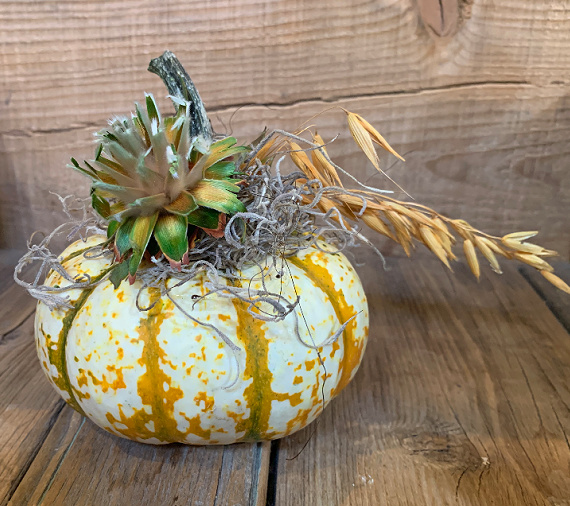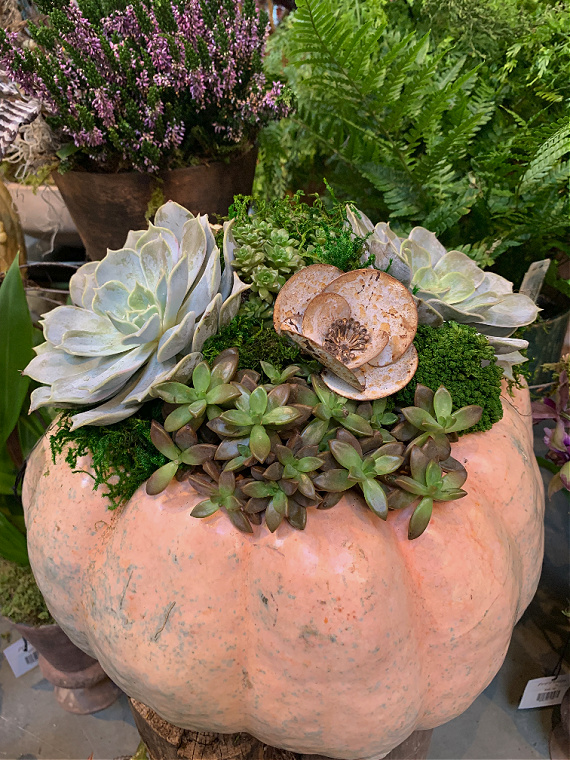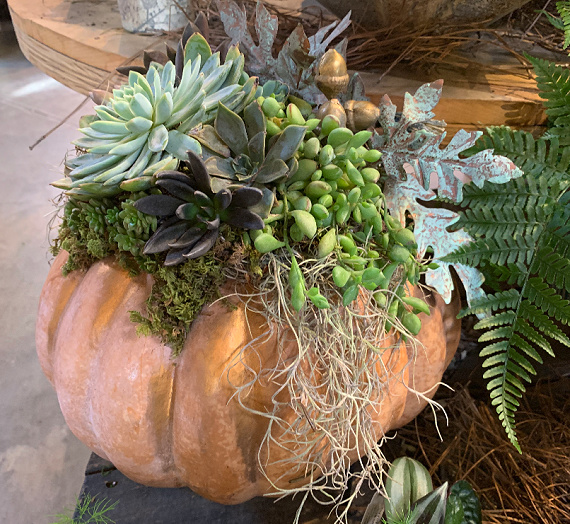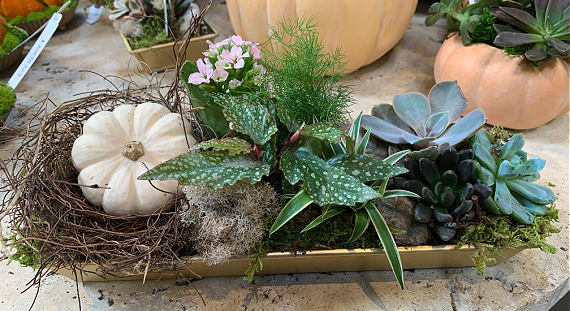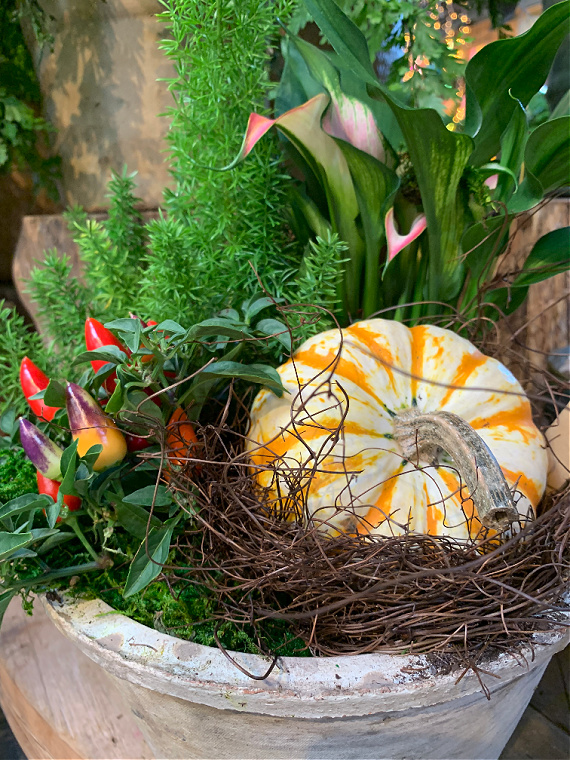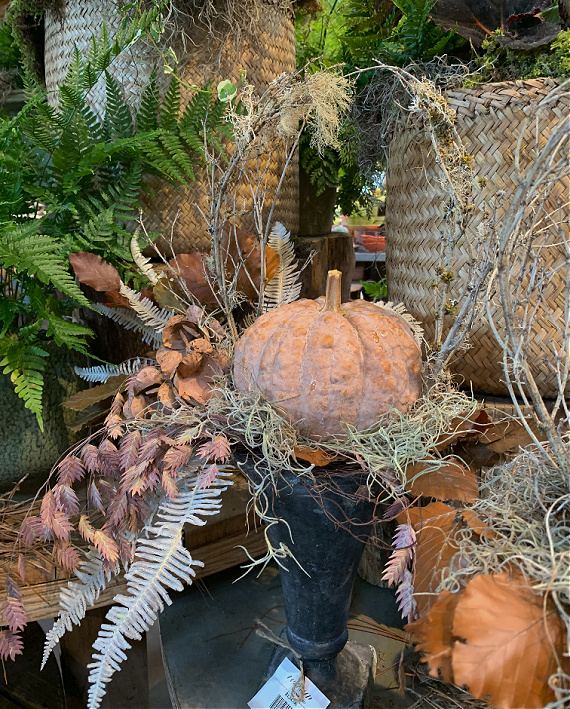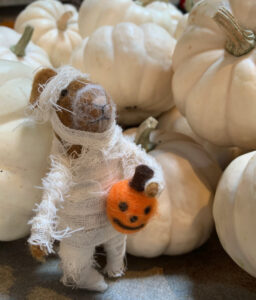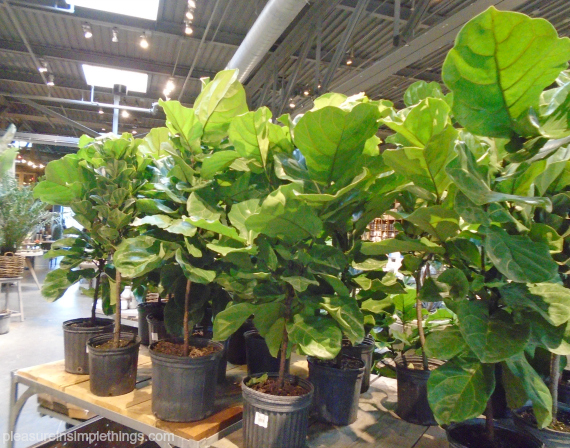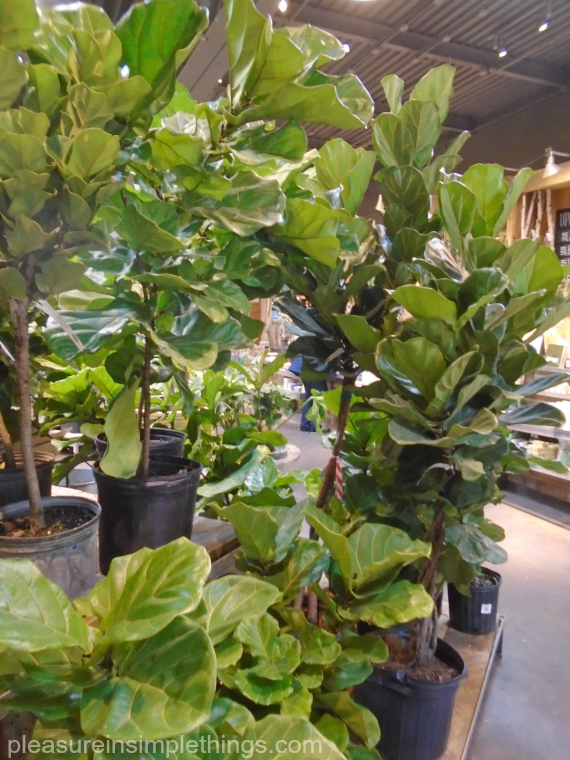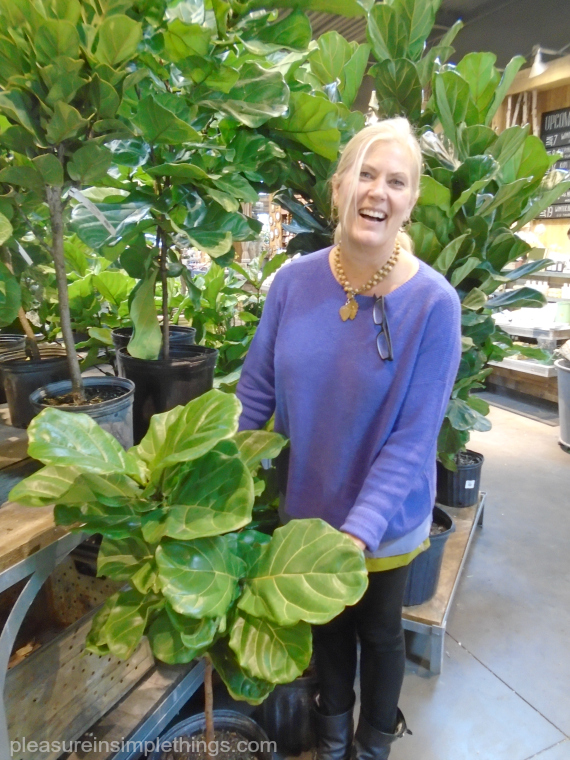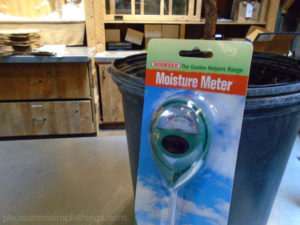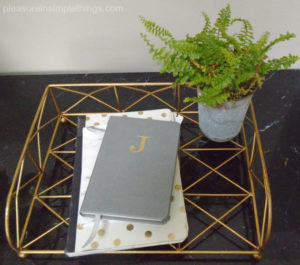Planting inside a pumpkin – whether real or artificial – has been going on for quite a few years now. Certainly, new colors and types of pumpkins pop up every year, but there are also some ways to make this season’s pumpkin – whether planted, or part of a planting – look fresh for the current year!
Let’s look at four easy ways to update your planted pumpkin creations this year!
Add a decorative non-living item to your planting. There are infinite ways to make a pumpkin planting look updated, simply by adding a decorative item to your arrangement. In the examples here, decorative metal items are used. Shop your local garden store gift shop or find something unique at a vintage store or thrift shop.
A great way to make your arrangement look super current, is to add an item currently trending – in this case, a mushroom!
Glue dried items to the outside of your pumpkin. You have seen me glue dried items to pumpkins in years past and this is a great idea for anyone that feels they don’t possess a green thumb! A glue gun and some found (or purchased) dried items from nature are all that are required! And, although this is not exactly a planted pumpkin, it creates the same appeal as one! Small pumpkins are especially great for this because very little material is needed to add some instant drama!
Incorporate a nest into your pumpkin arrangement. You know I have a passion for nests and why not use them with your pumpkins! Items from nature are always favorites of mine and nests can mix really well with pumpkins! You probably already have some nests, packed away with your Easter or spring décor, that can do double duty!
Add a pumpkin to an already fabulous living arrangement. Any arrangement you already have can look seasonal with an added pumpkin! Nobody does this better than Terrain – look at the examples here! Choose a pumpkin(s) that coordinates in color and/or style to your current planting! Have fun with it!
I hope you are inspired to add some seasonal décor to your home! The photos I used as examples here were all taken by me at Terrain in Westport. If you live local, be sure to visit Terrain for The Autumn Bounty Festival on October 1st, 11:00 am to 4:00 pm.
Thanks for stopping by!
Have a great weekend and remember to take pleasure in simple things, Jackie

